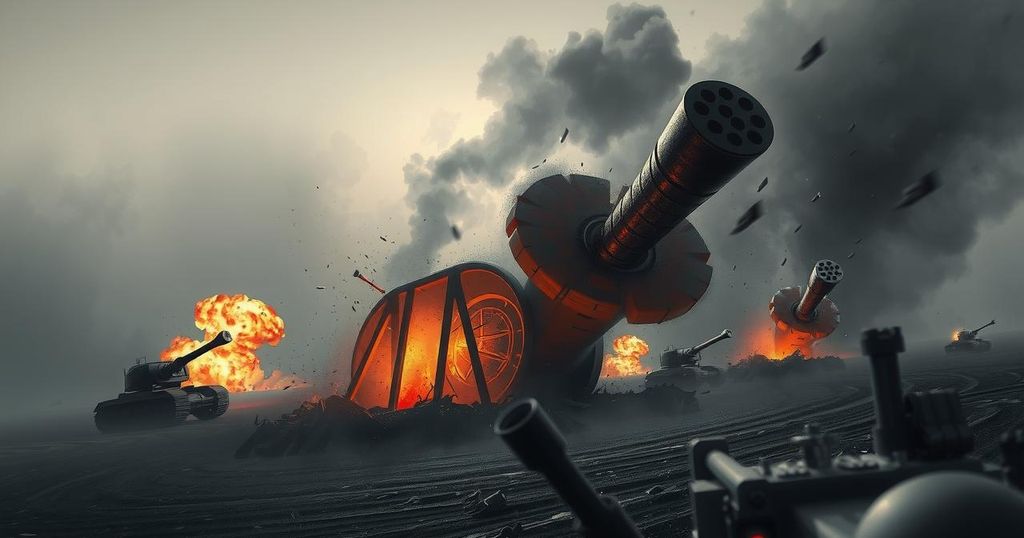Ukrainian Drone Strike Inflicts Damage on North Korean Howitzers in Kursk

The Ukrainian 14th Regiment reportedly damaged three North Korean M1989 howitzers in a drone strike around 18 March. The strike involved HIMARS batteries firing M30 rockets at their location. North Korea has furnished Russia with a variety of military supplies, while significant casualties have been endured by both sides during the conflicts in Kursk.
The Ukrainian 14th Regiment of Unmanned Aerial Systems reportedly damaged three North Korean M1989 howitzers in a coordinated drone strike. This attack took place around 18 March, with drone operators identifying the artillery hidden in treelines in Kursk Oblast, Russia. They communicated the location to a nearby Ukrainian battery, which is believed to be equipped with High-Mobility Artillery Rocket Systems (HIMARS).
Equipped with approximately 40 HIMARS units, the battery launched at least one M30 rocket. The detonated rocket produced a multitude of submunitions that cascaded down onto the exposed M1989 howitzers and their crews. While damages from this assault are challenging to quantify, the impact of the strike appears significant.
The M1989 Koksan, a North Korean self-propelled artillery system weighing 40 tons, was first publicly displayed in 1989 and features a distinctive 170-mm caliber. Its design allows for a range of up to 40 kilometers with conventional shells, and up to 60 kilometers when deploying active-reactive rounds.
Forbes indicates that North Korea has supplied Russia with various military equipment, including M1989 howitzers, anti-tank missile vehicles, rocket launchers, and air defense systems. Prior to this recent strike, Ukrainian forces had already destroyed at least one M1989 and multiple Bulsae-4 anti-tank launchers. A Russian drone mistakenly destroyed one of its own air defense systems in a notable mix-up.
A significant Ukrainian force had sustained a salient in Kursk until last week, when a targeted offensive from the Rubicon Center of Advanced Unmanned Systems compromised their supply lines in Sudzha. Concurrently, North Korean troops advanced, tightening the Ukrainian position and prompting a retreat that left behind valuable equipment. Despite these circumstances, Ukrainian drones and artillery continued to engage the opposing forces in the region.
Forbes characterizes the events in Kursk as a Pyrrhic victory for Russian and North Korean forces, likely resulting in substantial casualties and vehicle losses while compelling Ukrainian forces to retreat. Although Ukrainian losses were considerable, they were comparatively lighter.
In conclusion, the coordinated strike by Ukrainian drone operators on North Korean howitzers exemplifies the ongoing conflict dynamics in the region. The robust response from Ukraine highlights their strategic capabilities, despite suffering setbacks. The significant losses reported for Russian and North Korean forces indicate the toll of this engagement, shaping future military operations and bargaining positions.
Original Source: euromaidanpress.com







